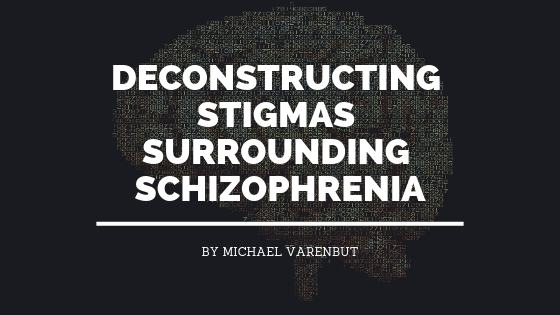There are many stigmas surrounding mental illness, especially disorders like schizophrenia and bipolar affective disorder. A huge factor contributing to this stigma is the fact that the general population is relatively uninformed about the details surrounding these disorders, and frequently is predisposed to inaccurate representation. The first step in reducing stigma is education, so in this article, I will deconstruct the diagnosis and implications of schizophrenia, and describe how it is so commonly misconstrued by the media, television, and movies.
A person experiencing schizophrenia can often have “delusions, hallucinations, disorganized thoughts and speech, and extremely disorganized or catatonic behavior,” accompanied with “diminished functioning, including limited emotional expression, restricted productivity of thought and speech, as well as a lack of initiating goal-oriented behavior.” The hallmark is often that of diminished ability to “reality test” situations and sensory inputs. These symptoms, of course, are the textbook definition, and a person’s experience of schizophrenia can embody any combination of these.
Often, schizophrenia emerges in late teen years and early adult years, but in rare cases can appear in children as young as five years old. It can be caused or triggered by genetic factors or psychological and social factors. There are no objective tests that can diagnose schizophrenia, and the diagnosis essentially rests on the account and experience of the patient, their family, or their friends.
The treatment for schizophrenia is lifelong and requires a combination of medication and therapy. It can often take time for those with schizophrenia to find the right balance of medications and therapy, but it is vital to living a happy and productive life.
In many media portrayals, schizophrenia is portrayed inaccurately, and is likened to violence or having multiple personalities. These depictions are not accurate, and often antagonize and alienate those with mental illnesses. The key to unraveling these is understanding how schizophrenia presents, reasons why a person may have it, and that treatment paths are improving every day as science and medicine progress. It is essential to reduce the stigma as it will result in more people with schizophrenic symptoms reaching out for help, and being unashamed and confident in doing so.
Supplemental Sources
https://www.healthline.com/health/understanding-schizophrenia#Living
https://www.verywellmind.com/schizophrenia-what-you-need-to-know-4156588

